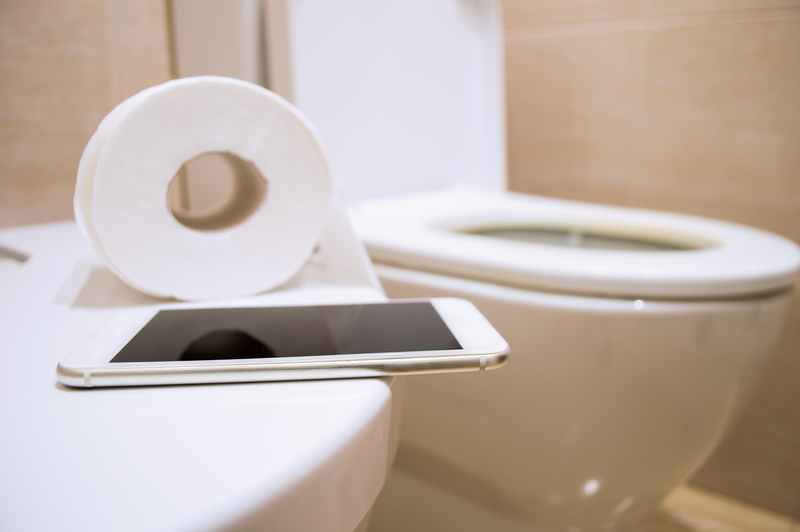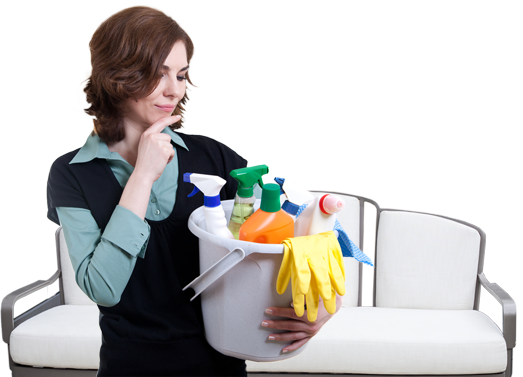Family Wellness Starts with Pure, Clean Air
Posted on 01/07/2025
Family Wellness Starts with Pure, Clean Air
Family wellness is the cornerstone of a happy, healthy home life. While we often focus on nutrition, exercise, and emotional wellbeing, the quality of the air we breathe is just as vital. Pure, clean air is essential for every family member's health--from small children to elders. With rising levels of air pollution and increased time spent indoors, prioritizing indoor air quality is more important than ever.

Understanding the Link: Air Quality and Family Health
The connection between clean air and family wellness is scientifically proven. Research shows that air pollution--both indoors and outdoors--can lead to a variety of health problems:
- Asthma attacks and respiratory distress in children and adults.
- Increased risk of allergies and sinus problems.
- Worsening of chronic health conditions such as COPD or heart disease.
- Potential developmental delays and learning difficulties in young kids exposed to polluted air.
- Higher rates of infections and diseases like pneumonia, colds, and the flu.
*Did you know? According to the World Health Organization, 9 out of 10 people worldwide breathe air containing high levels of pollutants, and indoor air quality is often much worse than outdoor air.*
Indoor vs. Outdoor Air Quality: Why Focus on Indoors?
While urban environments are notorious for polluted outdoor air, the air quality inside your home can actually be 2 to 5 times--or even up to 100 times--worse than outside. This is due to a combination of factors:
- Lack of proper ventilation: Modern homes are sealed tightly to save energy, but this also traps pollutants indoors.
- Sources of indoor pollution: Cleaning supplies, pet dander, dust mites, mold, tobacco smoke, and off-gassing from furniture and paint all contribute to poor air.
- Seasonal changes: Closed windows during winter or extreme heat means fresh air isn't circulating as often as it should.
*As families spend nearly 90% of their time indoors, especially children and the elderly, improving air purity becomes a priority for family health and wellness.*
Top Benefits of Pure, Clean Air for Your Family
- Stronger immune systems: Clean air helps your body fight off pathogens more effectively.
- Better sleep quality: Fresh, pollutant-free air aids relaxation and uninterrupted sleep for every family member.
- Enhanced cognitive function: Children show marked improvement in concentration and learning when air quality is optimal.
- Fewer allergy and asthma symptoms: Reducing irritants allows everyone to breathe easier.
- Long-term wellness: Clean air reduces risks of chronic diseases, contributing to greater longevity and vitality for your family.
Signs Your Home's Air Quality May Be Poor
Are you unsure if your home meets pure air standards? Look out for these indicators:
- Frequent sneezing, coughing, or dry throat indoors
- Persistent headaches or fatigue
- Stale, stuffy, or musty odors that linger
- Visible mold or excessive dust
- Condensation on windows, signaling high indoor humidity
If you notice these symptoms, it's time to take action for your family's wellness and start transforming your home into a sanctuary of fresh, clean air.
Effective Strategies for Achieving Pure, Clean Air at Home
You don't have to be a scientist to improve your residence's air. The following methods are proven to elevate indoor air quality and are practical for any family's busy lifestyle.
1. Ventilation: Let the Fresh Air In
- Open windows and doors whenever safe and possible to encourage fresh air flow.
- Install and use exhaust fans in kitchen, bathrooms, and laundry rooms to expel contaminants.
- Consider energy-recovery ventilators (ERVs) if you live in areas with extreme weather.
Tip: On days when outdoor air is cleaner (check local air quality indexes), airing out your home for even 10 minutes can make a world of difference.
2. Regular Cleaning and Dust Control
- Vacuum floors, carpets, and furniture often using HEPA-filter vacuums.
- Dust surfaces with microfiber cloths to capture--rather than stir--particles.
- Wash bedding and curtains weekly, since these trap allergens.
3. Manage Humidity
- Keep indoor humidity between 30-50% to deter mold and dust mites.
- Use dehumidifiers or humidifiers as needed, depending on your climate.
- Always repair leaks or water damage promptly.
4. Eliminate Indoor Sources of Air Pollution
- Avoid tobacco smoke inside the house.
- Choose natural or low-VOC (Volatile Organic Compounds) paints, cleaning products, and furnishings.
- Consider non-toxic alternatives for candles, air fresheners, and pest control.
- Store chemicals, solvents, and fuels outside of living spaces.
5. Use Air Purifiers Wisely
- Invest in HEPA-filter air purifiers for spaces where your family spends the most time, like bedrooms and living rooms.
- Look for models with carbon filters to remove odors and chemicals.
- Maintain filters per manufacturer guidelines for optimal performance.
6. Bring Nature Inside
- Decorate with air-purifying houseplants such as spider plants, peace lilies, and snake plants.
- Plants can absorb toxins and increase oxygen, but remember to avoid overwatering to prevent mold.
7. Keep Pets Groomed
- Bathe and brush pets regularly to minimize fur and dander in the air.
- Create pet-free zones in bedrooms, especially if any family member has allergies.
8. Test for Hidden Dangers
- Test for radon, a naturally occurring gas that can seep into homes and is hazardous when concentrated.
- If your house was built before the 1980s, check for asbestos and lead-based paint, which require special handling.
- Regularly change HVAC and furnace filters for year-round cleaner air.
Empowering Children: Teaching Kids About Clean Air
Creating a culture of air wellness means involving your children. Teaching them about air quality helps establish lifelong healthy habits. Here's how you can engage the youngest members of your family:
- Discuss what clean air means and how it affects their health in simple terms.
- Encourage outdoor play in areas with good air quality, teaching them to avoid high-smog days.
- Make plant care a fun, shared family responsibility to reinforce the importance of nature.
- Show them how to dust or use air purifiers under adult supervision.
Educational games or mobile apps about air pollution and environmental care can also boost engagement and understanding among kids.
When to Seek Professional Help
For some air quality concerns, DIY steps aren't enough. If any of the following conditions persist, call a professional:
- Persistent musty or chemical odors you can't identify
- Unexplained respiratory symptoms or illness in family members
- Mold growth in areas larger than 10 square feet
- If you've attempted improvements but see no results
Indoor air quality specialists can test for mold, VOCs, and other contaminants, guiding you toward specific solutions for a healthier, happier family.
Technology and Innovation: The Future of Family Health
Technology is rapidly advancing to support pure air in the home. Smart thermostats, air quality monitors, and Wi-Fi enabled air purifiers can all help you track and improve your family's environment in real time. Some devices alert you to dangerous levels of carbon monoxide or VOCs while others recommend actions for improvement.
- Smart air quality sensors provide instant feedback on indoor air pollutants
- Some purifiers connect to your smartphone, allowing remote control and scheduling
- Integration with other smart home tech creates a seamless wellness environment
*Adopting these innovations empowers your family to breathe easier today--and well into the future.*

Building a Long-Term Culture of Family Wellness with Clean Air
Wellness is not a sprint--it's a lifelong journey. Committing to clean air solutions as part of your family's daily habits ensures continual benefits:
- Schedule regular air quality checkups just as you would medical or dental visits
- Update your cleaning routines seasonally to address new sources of pollution
- Stay aware of changes in local outdoor air quality and respond accordingly
- Model and share healthy air habits with friends, extended family, and your community
The takeaway?
A thriving, energetic, and resilient family starts with the air you breathe every day. From simple cleaning hacks to technological upgrades, every step toward purer air is a step toward total family wellness.
Conclusion: Every Breath Matters in Family Wellness
Family wellbeing isn't just about what you eat or how often you exercise. The air in your home is the invisible foundation supporting your family's immune strength, energy, sleep, mental clarity, and long-term quality of life. Pure, clean air is one of the simplest, most effective ways to invest in the health of every generation under your roof.
By understanding the importance of indoor air quality, embracing strategies to promote cleanliness, and adopting new technologies, you're not just protecting your loved ones--you're empowering them to thrive. So, open those windows, grab the vacuum, bring in a few lush plants, and start your family's journey toward pure air health and wellness today.




